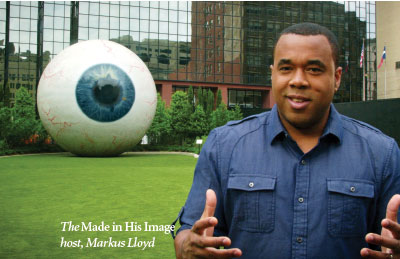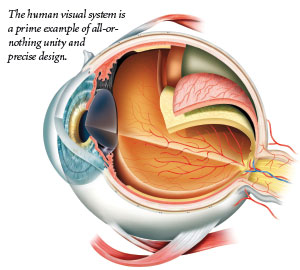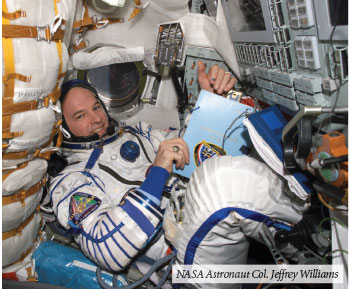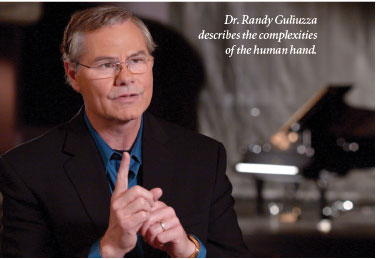And the LORD God formed man of the dust of the ground, and breathed into his nostrils the breath of life; and man became a living being. (Genesis 2:7)
Several crucial things are needed to construct a skyscraper: building materials, a detailed plan, and a mind to design and put it all together. After months of planning and working, the building takes shape and, once finished, looks stunning. It’s firmly grounded to withstand wind and unpredictable weather. It’s supported with precisely arranged metal bars, and it even has aesthetic features. The design is not only admirable but quite apparent. Would someone walk by a skyscraper and think it wasn’t designed?
The more we learn about nature, the more we discover just how intricately designed it is—with features far more elaborate than those of the skyscraper. Biological organisms have blueprint-like information (e.g., DNA and epigenetic) and building materials (proteins and others), and the only valid remaining question is whether or not a mind planned and put it all together. But why question the existence of a mind? Whenever we can verify the origination of plans and specifications, they are always the result of purposeful design, and only minds possess the ability to design. And only beings possess minds.
Take the human body. Its profound engineering outshines virtually everything else we see. Even the best scientists and engineers can’t come close to replicating its beauty, performance, and complexity. As we study the human body, it becomes apparent that it was the result of an exceptionally intelligent and creative Mind.
This fall, ICR will release Made in His Image, a new four-episode DVD series that follows in the footsteps of Unlocking the Mysteries of Genesis and explores the most complex and miraculous creations in the universe—us! We’ll take viewers on a journey through the development of a baby’s exceptional cardiovascular system that is vital to life in the womb, delve into the breathtaking features of the human eye and hand, and explore Christ’s marvelous engineering displayed through the abilities of the human body in motion.
The Miracle of Birth
The first episode looks at seven aspects of design that form a principle called all-or-nothing unity. This principle states that unless all of the critical parts are in the right place at the right time and in the right amount, none of the expected function is attained. Consultant physician Dr. Joseph Kezele and Dr. Randy Guliuzza describe how the birth of a child perfectly exhibits all-or-nothing unity and the wonderful hand of our all-powerful Creator at work.
 One example is the multiple temporary structures that allow a child to survive in a watery world for nine months and then suddenly transition into a normal breathing environment after birth. A substitute lung to get oxygen from the mother, shunts that divert most blood around the developing baby’s lungs, and blood vessels that connect the baby to the placenta—all of these must work together to enable a baby to thrive in the womb. Within the first 30 minutes after birth, all the temporary vessels, shunts, and openings normally stop functioning, and they permanently close within the next one to two days.
One example is the multiple temporary structures that allow a child to survive in a watery world for nine months and then suddenly transition into a normal breathing environment after birth. A substitute lung to get oxygen from the mother, shunts that divert most blood around the developing baby’s lungs, and blood vessels that connect the baby to the placenta—all of these must work together to enable a baby to thrive in the womb. Within the first 30 minutes after birth, all the temporary vessels, shunts, and openings normally stop functioning, and they permanently close within the next one to two days.
The Marvel of Eyes
The origin of the eye’s incredibly complex components has consistently been difficult to explain via a natural process of numerous, successive, slight modifications due to genetic mutations. The Lord Jesus certainly packed a huge amount of functionality into something beautiful, and our eyes not only allow us to see the world but help us to reflect the emotions of our inner spirit. They are a hallmark of God’s purpose and elegance.
 The visual system develops in the womb with built-in plans and specifications. Tissues form the eye in a precise choreography of carefully timed steps. At the same time, nerves are constructed to bring data from the eyes to the brain.
The visual system develops in the womb with built-in plans and specifications. Tissues form the eye in a precise choreography of carefully timed steps. At the same time, nerves are constructed to bring data from the eyes to the brain.
After a child is born, his eyes take in data. Light photons hit the back of his retina, which converts patterns of light into a flow of electrical signals. These data are sent down the optic nerve to the brain for interpretation into information. However, the brain cannot interpret the data until memories are formed for future reference. Both the processes of retrieving memories and associating them to data patterns are essential to complete the function of sight.
As simple as they seem, even eyelids display complex design. They protect eyes from dust and debris and keep the eyes lubricated. Tears not only help clean your eyes, they also contain antimicrobial agents and other compounds that produce a euphoric effect and help you feel better after crying emotional tears.
Uniquely Human Hands
 Human hands are definitely unique, enabling us to perform in ways unmatched by animals. Not only is their physical structure different from comparable hands in the animal kingdom, they are controlled by an unusually large neurological command center in the brain that gives us uniquely human abilities.
Human hands are definitely unique, enabling us to perform in ways unmatched by animals. Not only is their physical structure different from comparable hands in the animal kingdom, they are controlled by an unusually large neurological command center in the brain that gives us uniquely human abilities.
The human hand can perform a variety of grips and movements exhibiting an astonishing amount of flexibility and control. Our hands allow us to grip heavy objects like a hammer or a bowling ball as well as light and fragile objects like a potato chip. The unique ridges and swirls on our fingertips also act as data collectors.
Human hands can also perform rapid movements due to the brain’s profound ability to develop a “forward plan” that anticipates movements several steps ahead. This allows pianists to play up to 30 successive notes about 40 milliseconds apart.
Beauty in Motion
The human body is the ultimate example of the marriage of design and function, enabling athletic abilities that showcase just how perfectly God engineered us. It takes all parts functioning together as one well-balanced system to achieve amazing athletic feats like ballet or skiing or throwing a baseball.
 To help us balance, we have an interconnected control system in our ears known as the vestibular system—a great example of a biologically complex system with multiple parts working together for a single purpose. Our maculae give us straight-line movement data, while semicircular canals give us circular-motion data. Our brains interpret the data from the maculae and semicircular canals to give us a sense of our position and direction of movement. Our nervous system carries instructions from the brain to adjust the rest of the body according to the sensory data—enabling a gymnast to vault and stick her landing after a flip, twist, and turn.
To help us balance, we have an interconnected control system in our ears known as the vestibular system—a great example of a biologically complex system with multiple parts working together for a single purpose. Our maculae give us straight-line movement data, while semicircular canals give us circular-motion data. Our brains interpret the data from the maculae and semicircular canals to give us a sense of our position and direction of movement. Our nervous system carries instructions from the brain to adjust the rest of the body according to the sensory data—enabling a gymnast to vault and stick her landing after a flip, twist, and turn.
Athletes are good at their sports because they practice. The brain stores repetitive muscle movements as skills to be recalled and used at will. The more an athlete repeats a purposeful motion, the more precise and easily recalled the skill will be in his brain.
Everywhere we look—up into the vast and awesome grandeur of the universe or down into the incredible beauty of the inner workings of our bodies—we see great design and purpose, pointing us to the Creator.
In spite of the many other wonders we witness, you and I are the most efficient, complex, and astonishing work that our omnipotent and omniscient Designer ever made.
So God created man in His own image; in the image of God He created him; male and female He created them. (Genesis 1:27)
The Made in His Image DVD series showcases God’s incredible design in the human body and demonstrates that there’s so much more to us than just well-engineered physical anatomy. As you witness the wonders of God’s work in the human body, we pray that you’ll be reminded of His deep desire to have His creation reconciled to Himself. We hope you experience the sense of reverence, worship, and knowledge of the Lord Jesus that He intended when first He created you in His own image.




















